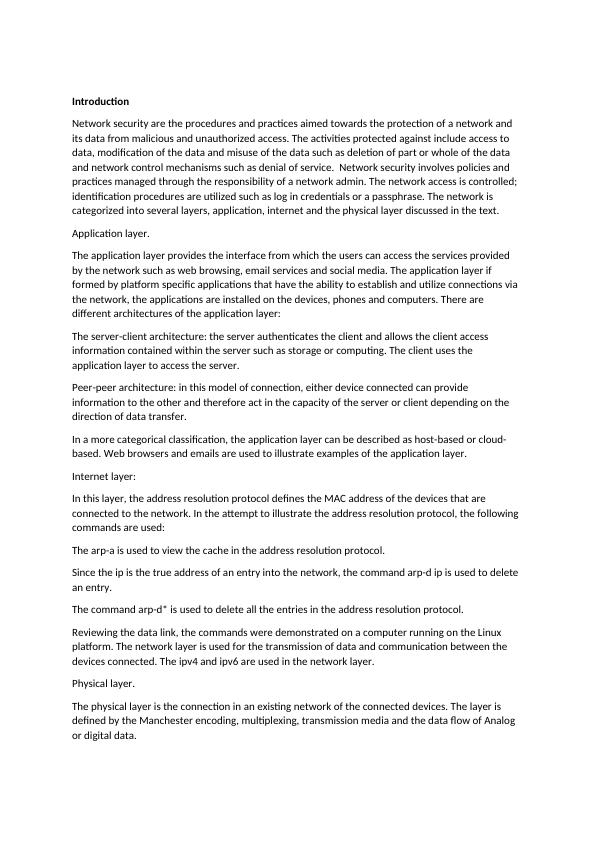Network and Security: Layers, Multiplexing, and Error Control Mechanisms
4 Pages1235 Words455 Views
Added on 2023-06-11
About This Document
This article provides an overview of network security, including the different layers such as the application, internet, and physical layers. It also covers multiplexing mechanisms, error control, and other topics such as routers, MAC addresses, Ethernet headers, TCP window size, and cellular networks.
Network and Security: Layers, Multiplexing, and Error Control Mechanisms
Added on 2023-06-11
ShareRelated Documents
End of preview
Want to access all the pages? Upload your documents or become a member.
Networking Security Assignment
|6
|1409
|38
Network And Security Student Name Affiliation Date Introduction
|4
|937
|229
Networking and Security ITECH1102
|5
|829
|27
Networking and Security - Application, Internet, and Physical Layer
|5
|1001
|106
Theory and Simulation Exercises
|21
|2613
|32
Report on Android Operating System - EECS 571
|13
|2007
|258


